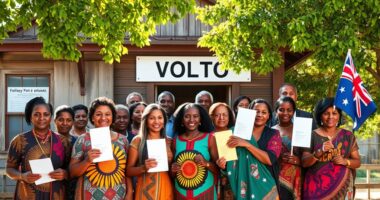Imagine yourself in a busy marketplace, surrounded by a colorful variety of different languages blending together around you. As you navigate through this linguistic mix, you may ponder the concept of ‘native speakers’.
What does it truly mean to be a native speaker of a language, and how does this designation impact our daily interactions and societal structures? In this discussion, we will explore the complexities of native speaker identity, the privileges and biases associated with it, and the challenges faced by non-native speakers in a world that often prioritizes linguistic homogeneity.
Stay tuned to unravel the intricacies of language and identity.
Key Takeaways
- Native speakers have a high level of proficiency and understanding of language nuances, making them a benchmark for language learners.
- Language acquisition shapes cultural and linguistic affiliations, contributing to one's identity within a linguistic community.
- Native speakers benefit from unconscious advantages and power dynamics, leading to biases in communication.
- Non-native speakers face challenges such as pronunciation difficulties, unfamiliarity with workplace norms, and lack of confidence, but language training and support mechanisms can help overcome these challenges.
Defining 'Native Speaker
Defining a 'native speaker' can be a complex task as it encompasses various linguistic, cultural, and experiential factors. When considering language proficiency, a native speaker is often regarded as someone who's acquired a language naturally from infancy, typically in a household where the language is spoken. This early exposure usually results in a high level of proficiency and a deep understanding of the language's nuances, idioms, and colloquialisms.
Cultural fluency also plays a significant role in defining a native speaker. It involves not only linguistic competence but also the ability to navigate and comprehend cultural references, social norms, and implicit communication within a specific cultural context.
In the realm of language acquisition, native speakers are often perceived as the ultimate standard of linguistic proficiency. Their intuitive grasp of the language, acquired through years of immersion and interaction, sets a benchmark for language learners. However, it's important to recognize that language proficiency exists on a continuum, and non-native speakers can also attain high levels of proficiency and cultural fluency through dedicated study and immersion experiences.
Therefore, while the term 'native speaker' carries weight in linguistic discourse, it's essential to acknowledge the diverse paths to language mastery and the varying degrees of proficiency among speakers.
Language Acquisition and Identity

Language acquisition and identity play a crucial role in shaping an individual's cultural and linguistic affiliations. Identity formation is deeply intertwined with language acquisition, as the languages one learns and uses can significantly impact their sense of self and belonging. The process of acquiring a language involves not only learning its grammatical rules and vocabulary but also understanding the cultural nuances and context in which the language is embedded.
This understanding is essential for individuals as it contributes to their cultural assimilation and helps shape their identity within a particular linguistic community. Cultural assimilation occurs as individuals acquire language skills and integrate into a new cultural environment. This process involves not only learning the language itself but also adapting to the cultural norms, values, and social practices associated with it.
Language acquisition becomes a tool for individuals to navigate and participate in the cultural context, leading to the formation of their identity within that specific cultural framework. Therefore, language acquisition and identity are intricately linked, influencing each other and contributing to an individual's sense of belonging and cultural identity.
Native Speaker Privilege and Bias
Examining the inherent advantages and biases associated with being a native speaker can provide valuable insight into the complexities of language use and communication dynamics. Native speaker privilege awareness and implicit bias recognition are crucial elements in understanding the impact of language on social interactions.
- Unconscious Advantage: Native speakers often benefit from unconscious advantages in social, professional, and educational settings, which can perpetuate inequalities and hinder effective communication.
- Cultural Assumptions: Being a native speaker often comes with ingrained cultural assumptions, which can lead to biases in understanding and interpreting non-native speakers' communication, contributing to misunderstandings and misinterpretations.
- Power Dynamics: The privilege associated with being a native speaker can create power dynamics that affect not only language use but also broader societal structures, influencing relationships, opportunities, and access to resources.
Recognizing and addressing native speaker privilege and biases is essential for fostering inclusive and equitable communication environments. By acknowledging these factors, individuals can work towards mitigating the impact of these biases and creating more balanced and respectful interactions, ultimately contributing to a more just and inclusive society.
Challenges for Non-Native Speakers

As a non-native speaker, navigating the nuances of a language can present multifaceted challenges in various social and professional contexts. Cultural differences and communication barriers often contribute to these challenges, making it important to understand the complexities involved. The table below highlights some common challenges faced by non-native speakers:
| Challenges | Examples | Impact |
|---|---|---|
| Pronunciation | Difficulty in articulating certain sounds | Misunderstandings in conversations |
| Idiomatic Expressions | Misinterpretation of figurative language | Hinders seamless communication |
| Workplace Dynamics | Unfamiliarity with implicit workplace norms | Struggles in fitting into the work culture |
These challenges can significantly impact a non-native speaker's confidence and ability to effectively convey their thoughts and ideas. Moreover, they can lead to misunderstandings and misinterpretations, affecting both personal and professional relationships. Understanding and addressing these challenges through language training, cultural immersion, and support mechanisms can help non-native speakers navigate these obstacles more effectively. By acknowledging and working to overcome these challenges, non-native speakers can enhance their language proficiency and bridge the gap created by cultural differences and communication barriers.
Embracing Linguistic Diversity
To effectively embrace linguistic diversity, it's essential to foster an inclusive environment that celebrates and values the richness of different language backgrounds. Language inclusion and cultural exchange are crucial components in creating a space where diversity isn't only acknowledged but also appreciated.
Here are three key ways to promote linguistic diversity:
- Encouraging multilingual communication: Actively promoting the use of different languages in various settings can facilitate a more inclusive environment and provide opportunities for individuals to express themselves in their native tongue.
- Providing resources for language learning: Offering access to language learning resources not only supports individuals in acquiring new languages but also demonstrates a commitment to embracing diverse linguistic backgrounds.
- Recognizing the value of cultural exchange: Encouraging cultural exchange activities, such as language clubs, international festivals, and language immersion programs, fosters an environment where individuals can learn from one another and gain a deeper appreciation for different languages and cultures.
Frequently Asked Questions
What Are Some Common Misconceptions About Native Speakers?
Common myths about native speakers often revolve around the assumption that they've complete cultural assimilation and are flawless in their language use. However, this overlooks the diversity within native speaker communities and the potential for varying levels of language proficiency.
Additionally, the belief that native speakers are always the best language models may disregard the influence of regional dialects and changes in language over time.
How Do Language Policies and Politics Impact the Status of Native Speakers?
Language policies and politics significantly impact the status of native speakers, influencing language preservation and cultural identity. Legislation and government support can either bolster or diminish the recognition and use of indigenous languages, affecting the vitality of these linguistic communities.
The political climate can shape the allocation of resources for language education and revitalization efforts, ultimately impacting the ability of native speakers to maintain and transmit their languages across generations.
Are There Any Specific Challenges That Native Speakers Face When Learning a Second Language?
When diving into the world of learning a second language, native speakers often encounter challenges that non-natives might find amusing. Achieving language fluency can be a bit of a rollercoaster ride, with cultural immersion adding an extra twist.
Navigating the nuances and idiomatic expressions of the new language requires finesse. It's a process that demands patience, a healthy dose of humility, and a willingness to embrace the unfamiliar.
What Are Some Strategies for Non-Native Speakers to Overcome Language Barriers in Professional Settings?
To overcome language barriers in professional settings, you can employ language learning strategies such as regular practice, immersion, and seeking feedback.
Additionally, cultural understanding techniques, like learning about social norms and customs, can help you communicate effectively.
By actively engaging with the language and culture, you can build your confidence and competence in professional interactions.
Embracing these strategies will enhance your ability to navigate language barriers and succeed in professional settings.
How Can Individuals and Organizations Promote Inclusivity and Respect for Linguistic Diversity in Their Communities?
To promote inclusion and diversity appreciation in your community, start by fostering open dialogue and actively listening to diverse voices.
Encourage language learning opportunities and celebrate linguistic diversity through cultural events. Implement inclusive language policies and provide resources for multilingual communication.
Embrace the richness of different languages and encourage respectful interactions. By creating an environment that values linguistic diversity, you can cultivate a sense of belonging for everyone in your community.
Conclusion
You've explored the complexities of native speaker identity, privilege, and bias in language acquisition. Embracing linguistic diversity is essential for creating an inclusive and equitable society.
Just as a vibrant garden is made up of a variety of flowers, our linguistic landscape is enriched by the diverse voices and experiences of non-native speakers.
Let's continue to cultivate a world where everyone's language and identity are valued and celebrated.









